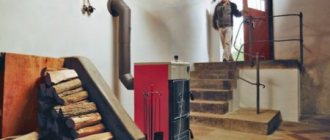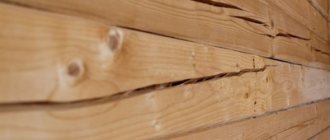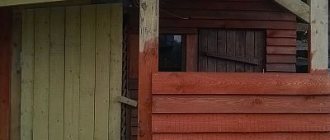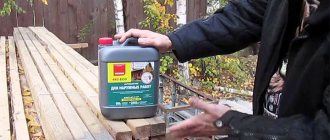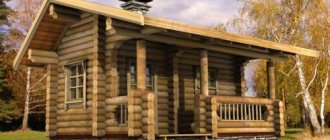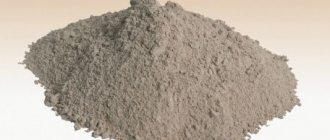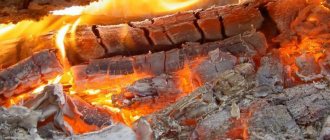The installation of floorboards is planned in both residential and non-residential rooms. The most common and optimal materials for laying wooden floors are oak and ash; aspen and alder are used a little less frequently. These types of wood have excellent strength and wear resistance. For example, oak floors look stylish and expensive, especially when varnished.
How to select the width and thickness of the floorboard
The selection of wood products for flooring takes into account the following criteria:
- Location of future floors.
- Type of flooring: rough or finished floor surface.
- What is the planned load on wooden floors?
The thickness of the board is selected taking into account the purpose of the room. When selecting, you need to take into account the wear and tear. Prospects for repairs are also included.
There are factors that are taken into account when choosing wood for the floor:
- If the board has a thickness of 10 mm, one grinding is performed, the top layer is removed up to 2 mm.
- The material thickness of 12 mm allows the board to be sanded. It is used for flooring over warm floors.
- To lay the floor in a private house, wood material with a thickness of 15 mm is usually used. The board will have locking fastenings, this allows for repeated replacement of elements.
- Parquet boards with a thickness of up to 20 mm are laid in rooms with high traffic. The created parquet is durable and can withstand variable loads.
- The largest board thickness is 22 mm. It is used in those rooms where there is an increased load from the flow of people.
What to look for when choosing
The moisture content
is taken into account .
If you purchase lumber for a living room, a value of 12% is sufficient. For a wet bath, sauna, take a board with an indicator of 20 - 25%. This is explained by operating conditions - in a damp climate, the material will absorb water and become deformed. Features of choice:
- Pay attention to the thickness of the boards. For housing, a thickness of 20 - 25 mm is sufficient, since there is no heavy load in the rooms. For corridors, verandas, garages, use the parameter 30 – 35 – 40 mm in order to be able to scrape the surface during repairs.
- Check the dimensions are correct . The uniformity of edges and warping of elements are taken into account. The products are inspected for fiber delamination, the presence of mold, and rot at the ends.
Valera
The voice of the construction guru
Ask a Question
It is a mistake to purchase wet lumber in the hope that it will dry by the time of installation. Self-drying will lead to deformation, since there are no chambers where gradual and uniform release of moisture occurs.
What sizes of boards are produced?
The dimensions of the flooring material are selected so that the gaps between the joints of the boards are minimal. Manufacturers offer length options from 2 to 6 m. When calculating the thickness of wood products, the gaps between the logs are taken into account. It is also necessary to take into account the load on the material. The greater the distance, the thicker the board should be used. With a distance of up to 70 cm between the logs, lumber with a thickness of 3.5 to 4.0 cm is purchased; if this distance is greater, then from 4.0 to 5.0 cm.
Information! Lumber is materials obtained by longitudinal cutting of logs and logs of a certain quality and size. They are characterized by two plane-parallel planes and a thickness of up to 10 cm.
The width of the board is selected depending on your preferences. But we must take into account that wooden panels will shrink during the process, and this will affect the future floor covering. Manufacturers produce wood products with a width of 8.5 to 14 cm.
What are lags for?
With most floor installation methods, the classic and often used one remains the option of using a structure made of logs. These are transverse supports that serve as a base on which the rough or finished finishing flooring is laid.
Purpose of the log:
- uniform distribution of load on the base base;
- reducing the deflection of the flooring;
- ventilation of the underground space.
The most popular material for logs is wooden beams or boards.
Timber and floor board
Which board is best to use for the floor surface?
What material is best for laying flooring in the house? Unedged boards are used for the rough surface. This lumber has a low price, but the quality only wants to be the best. Laminate, tile, and parquet are laid on wood. Unedged fabric is not suitable for finishing flooring.
Hardwood is used for the bathhouse floor. Wood can withstand temperature changes and high humidity. But the material must be processed before installation.
Different types of wood are used in apartments and houses, much depends on the capabilities of the property owners. Cedar, oak, larch are preferable for finishing the floor surface. The tongue and groove board is strong and smooth and is considered the best option. Ventilation grooves made on the inside will allow the laid floorboards to “breathe”.
In open areas (balcony, veranda) oak and larch are used. Wood has a sufficient degree of strength and the material does not rot. Most often, a corrugated board is used - it does not allow water to accumulate and flow down the grooves. In winter, there is no slipping on such a surface.
Each room or non-residential premises has its own wood products. Much depends on various factors, and you need to approach the choice of board individually.
Solid wood flooring
The massive type of connection requires locking fasteners. There is a protrusion on one side and a groove on the other side. This connection makes the array strong. The shape for the projections or ridges is cone-shaped; the cone can hold boards 5-6 meters long.
Sometimes, for installation, boards are sawn 3 meters long to make connections. The solid is suitable for a subfloor, then, for example, linoleum is laid on it. For a bath, the array can be used as a finishing floor.
Glued board
This option is created by pressing and gluing several boards. The fibers are arranged so that the geometry of the material is preserved. Glued boards have a fairly long service life. The material does not dry out over time and remains smooth for a long time. Laminated wood is sold at a high cost.
For glued boards, you can lay logs in increments of 40 cm.
Terrace board
A wavy surface is created on the front side of the decking board. It is used as a flooring material where the floor is wet: in a bathhouse, in a swimming pool, in a bathroom with a bathtub. The advantage of terrace material is that its textured surface does not allow your feet to slip.
The choice of wood products depends on each specific case. There is no need to save money if you want the tree to last for several decades without replacement.
Content
A floorboard is a profile part made of wood, which is intended for covering the floor. Externally, it looks like a milled board, which is made of a massive piece of wood. This, by the way, is the main difference between a floorboard and a parquet, since the latter is obtained by gluing together several thin layers.
It is obvious that the material from which the floorboards are made is exclusively natural wood. Moreover, it must be high quality wood - without flaws, knots, blackening or cracks. Thanks to the natural material, floorboards are an environmentally friendly floor covering that is not capable of causing allergies.
Wood types for floors
It is important to know the properties of wood, how it “behaves” during operation, as well as other characteristics:
- Coniferous species. Wood is often used in houses and apartments. The material has a good quality-to-cost ratio. Pine and spruce are impregnated with resins. This prevents the tree from collapsing under the influence of an unfavorable environment. Mold and mildew do not form on coniferous trees. In any room, the vapor permeability of coniferous wood allows you to maintain optimal humidity.
- Alder and aspen. Wood has a short service life, it does not have high strength, and cannot withstand heavy loads. Among the advantages, it is worth noting the positive effect on the body. Alder and aspen boards are used in children's rooms, as well as in saunas or baths. This wood is not installed in high traffic areas.
- Linden. Wood does not have high strength; it is prone to the formation of fungus and mold. Therefore, linden boards are treated with an antiseptic before laying. The cost of lumber is low, but before installation, the material needs to be prepared.
- Cedar. This is wood with a very beautiful structure. Cedar can withstand high loads and changes in humidity. Wood contains essential oils that have a beneficial effect on the human body and maintain the microclimate in the room. The price of cedar boards is high, but the quality and service life of the wood are worth the money spent.
- Siberian larch. Manufacturers offer consumers 12 shades of wood. With Siberian larch, strength and durability of the material come first. Wood is resistant to moisture, mold does not form on it, and it does not rot. Hardwood floorboards emit a pleasant aroma with antiseptic properties. Such floors will maintain a healthy climate in the house.
- Oak. This breed is often used for flooring. Wood has increased strength and a long service life. Oak is resistant to moisture, does not rot, mold or mildew. Wood also has good thermal and sound insulation properties. Oak material is expensive, but its cost pays off over long-term use.
Quality classes of floor lumber
The following types of wood are used for arranging the floor surface:
- Extra class. Wood of this class is mainly used for finishing flooring. There are no defects or knots on the canvas, the surface is smooth and has a uniform shade.
- Class A. There are no cores, cracks or chips on the surface of the material. Resin and knots can be located at a distance of 1.5 meters from each other. Used for finishing flooring.
- Class B. Acceptable at a distance of 1.5 meters are 4 knots, minor damage and 2 non-through cracks. Used as finishing floor coverings.
- Class C is a low class of wood. Most often used as a rough coating. The canvases have visible defects: cracks, chips, knots.
Flooring rules
The process of installing wooden flooring consists of several stages.
Preparing the base
The board must be ventilated, so it is not laid on a solid base, but on joists or beams. They must also be dry and thick enough to support the load.
The following are used as support beams:
- thick boards placed on edge;
- bars;
- debarked round timber with the top side beveled into a plane.
The cross-section of the logs depends on the installation method - on a solid concrete base or on support posts. And also on the length of the span between them. Exact numbers can be found in SNiPs and reference literature.
Before laying the logs on brick or concrete columns, they are covered with a double layer of roofing material for waterproofing. You can place cuttings of boards under the logs to level them horizontally. Both joists and linings are impregnated with antiseptic before installing plank floors.
Calculation of the amount of material
All lumber is sold in cubes. This means that the amount of material that is suitable for a house or apartment in m³ is calculated. To calculate the volume of one board, multiply the parameters of the lumber among themselves: thickness by width and length.
For example, the size used is 2.5x10x600 cm. In meters: 0.025 m, 0.1 m and 6 m. The volume is: 0.025x0.1x6 = 0.015 m³.
In one cubic meter of boards there will be: 0.015 m³ - 47.61 pieces.
Important! When shipping, the number of boards is rounded down. Therefore, it is better to buy 15-20% more material. When purchasing wood products of class B and C, defects in the package are possible. It is better to have a supply of material, because wood from another batch may not be suitable.
Laying floorboards
The boards are laid on the floor in three stages:
- Installation of lag.
- Laying waterproofing and insulation.
- Installation of finishing floor covering.
When laying the floorboards, ventilation holes are also installed.
Initially, determine the distance between the lags. The optimal distance is 60 cm. The logs are laid out across the length of the boards. The work is carried out level, then in the next stages of installation it will be easier to work. At the second stage, additional waterproofing and thermal insulation are installed. At this stage, the material is treated with special means.
At the third stage, the wood is installed. Laying begins with a gap of 10 mm from the wall. The gap is necessary because natural wood is flexible and flexible. The first floorboard is laid with a tongue and groove to the wall and secured with self-tapping screws. The reliability of the floor surface depends on the quality of the tongue and groove fastening.
Then one board is applied to another and inserted into special phases. When the boards need to be laid in two rows, a slight offset is made between them, which provides greater strength.
The resulting gap between the material and the wall is left and covered with a plinth. After this, the flooring is considered to be installed. Any material can be laid on the floor. The design of subsequent finishing depends only on the preferences of the home owner.
If you purchase high-quality lumber and install tongue-and-groove floorboards according to the rules, the wooden floor will last for several decades without repair.
Areas of use
Boards are widely used in construction work.
Frame structures. Frame house construction has become widespread these days. Its main advantages are the speed and ease of installation of such structures. When constructing frame supports, you cannot do without boards. In this area, any type of lumber is used - dry or raw, edged or planed, everything depends only on the planned construction time and budget. If you have enough time, you can purchase boards with natural moisture content and dry them yourself at the construction site.


